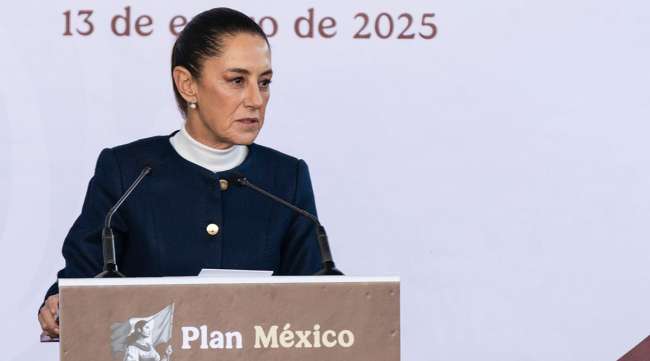Mexico’s Bold Move on Chinese Imports
Mexico is set to ramp up tariffs on Chinese cars, steel, and textiles to a hefty 50%, a sharp increase from the previous 20%. The decision comes as part of Mexico’s broader strategy to protect domestic industries and support local jobs. It reflects more than just a trade tweak—it signals a clear intent to prioritize local manufacturing while addressing pricing concerns about imported goods.
Details of the Tariff Increase
Currently, imports of Chinese vehicles to Mexico face a 20% tariff. However, new policies approved recently allow tariffs to rise to the maximum 50% permitted by World Trade Organization rules. This hike targets imports that enter the country priced below set reference points, a practice that can undermine homegrown competitors.
The main goal behind this tariff spike is to protect jobs within Mexico’s auto, steel, and textile sectors, which have felt pressure from low-cost imports, especially from countries without formal trade agreements.
Broader Impact Beyond China
Interestingly, these tariffs aren’t just about Chinese goods. The list of affected items spans approximately 1,400 products from several countries—including South Korea, Thailand, India, Indonesia, Russia, and Turkey—none of which have formal trade deals with Mexico. This broad targeting aims to address the issue of “transshipment,” where cheaper goods from China might be routed through other countries to dodge tariffs.
The Local Manufacturing Boost and Trade Dynamics
This new tariff policy ties into Mexico’s “Plan Mexico,” an initiative designed to stimulate local manufacturing industries by making imports less price-competitive. The approach is reminiscent of classic protectionist policies but framed as a job-saving measure in an increasingly globalized market.
Mexico has been one of the biggest destinations for Chinese automobiles, thanks in part to competitive pricing and manufacturing shifts. However, tightening import costs also appears designed to maintain good neighborly trade relations, especially given Mexico’s strong ties with its largest trading partner to the north.
Effects on Logistics and Freight Flow
For the logistics world, these tariff changes could shake up freight and shipping routes. Higher tariffs on Chinese goods might lead to adjustments in import volumes, prompting shifts in cargo forwarding and distribution strategies. Companies may look to source elsewhere or even boost local assembly, altering the standard flow of international shipments.
Such policy shifts demand flexibility in logistics planning—whether for moving bulky shipments like auto parts or textiles or even for dispatch and delivery within Mexico to support local manufacturers and their supply chains.
Quick Look: Tariff Rates Comparison
| Product | Previous Tariff | New Tariff |
|---|---|---|
| Chinese Imported Cars | ~20% | Up to 50% |
| Aço | Varies (Under 20%) | Up to 50% |
| Têxteis | Varies | Up to 50% |
What This Means for Importers and Exporters
Businesses trading with Mexico need to be alert to these tariff adjustments. Importers of Chinese goods or freight forwarding companies managing containers with steel or autos may see increased costs, which can ripple through pricing structures.
For exporters, particularly those aiming to move bulky goods or vehicles into Mexico, transportation partners like GetTransport.com become essential. The platform offers affordable and flexible cargo shipping solutions globally, covering everything from house moves to large freight shipments. This versatility is critical amid shifting trade landscapes, where reliable and cost-effective logistics support can make or break supply chains.
How Tariffs Could Influence Cargo and Freight Movements
- Redirection of shipments to countries with trade deals
- Potential rise in local assembly and production
- Increased demand for domestic distribution and haulage
- Greater complexity in customs clearance and forwarding documentation
Transparency and Strategic Planning in Transport
Given the evolving tariff environment, transparency in shipping costs and reliable delivery windows are paramount. Platforms offering real-time quotes and transparent pricing can help businesses navigate these changes without surprises. Mexico’s tariff move illustrates why logistics providers need to be nimble, ready to adjust routes, and find cost-effective solutions—something that GetTransport.com excels at.
Looking Ahead: The Bigger Picture on Global Logistics
While the immediate impact of Mexico’s tariffs may be seen mostly regionally, the ripple effects touch the international freight and shipping sectors. Adjustments in trade flows can influence global routing, container availability, and freight rates, particularly in sectors like automobile and steel transport.
This doesn’t revolutionize global logistics overnight but is a clear reminder of how trade policies underpin cargo routes and freight demand. For logistics platforms and freight forwarders, staying on top of such shifts is crucial to align customer needs with cost-effective, timely dispatch and haulage solutions.
Why Try It Yourself?
At the end of the day, even the most thorough reviews can’t substitute firsthand experience. With GetTransport.com, you gain access to a transparent and convenient platform that offers global cargo transportation at competitive prices. This empowers you to make well-informed decisions, avoiding unnecessary costs or setbacks.
Whether you’re moving parcels, pallets, vehicles, or bulky shipments, the platform’s extensive choices combine convenience and affordability, all tailored to your unique logistics needs. Book your Ride on GetTransport.com to enjoy reliability and simplicity in freight transport.
Resumo
Mexico’s decision to increase tariffs on Chinese cars, steel, and textiles to 50% is a strategic move aimed at safeguarding domestic manufacturing and stabilizing local jobs. This includes tariffs on various products from countries without trade agreements, addressing the tactic of transshipment, and reinforcing Mexico’s industrial sector under the “Plan Mexico” initiative.
Such tariff changes carry significant implications for international shipping, freight forwarding, and cargo distribution networks. These shifts emphasize the need for agile logistics solutions that can handle the evolving patterns in trade and shipment demands.
Plataformas como GetTransport.com align well with these challenges, providing cost-effective and reliable freight forwarding and transport services worldwide. Whether moving cars, bulky goods, or household items, GetTransport.com simplifies logistics, making transportation more accessible and efficient amid a changing trade environment.

 Mexico’s New 50% Tariffs on Chinese Cars, Steel, and Textiles Aim to Protect Local Manufacturing">
Mexico’s New 50% Tariffs on Chinese Cars, Steel, and Textiles Aim to Protect Local Manufacturing">